Here's to the future! It seems odd to say that given that the United States Men's National Team has beaten the Netherlands and Germany in friendlies in the last few weeks and there is a CONCACAF Gold Cup on the horizon. However, given the performance turned in by the United States U-20 squad at the World Cup, it seems prudent to have a glance at what the future could bring once these current U-20 players mature.
Even if a team has the best attack in the world, they have no hope of winning matches if they can't defend and keep teams off the board. So, it makes sense to begin looking through our crystal ball with goalkeeper Zach Steffen and defenders Matt Miazga and Cameron Carter-Vickers first.
Steffen earned plaudits galore for his play at the U-20 World Cup, and his performance in the Quarterfinal's penalty shootout will not soon be forgotten. After making a number of spellbinding saves throughout the tourney and saving a penalty late on against Colombia in the Round of 16, he twice denied Serbia on match point in the quarterfinal to keep the Americans in the match.
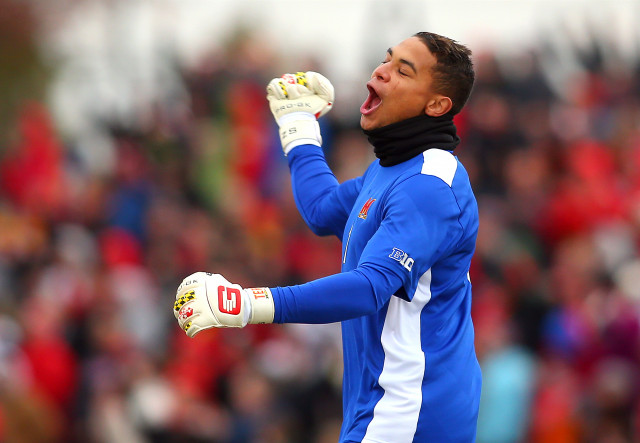
While he was unable to win the match for the United States, that falls on the inability of his teammates to convert their own opportunities. He did everything he could, and looks like the next in a long line of stellar American goalkeepers. After spending two years with Maryland playing in the Big 10, he made the move over to SC Freiburg of Germany. Although Freiburg were relegated to the 2.Bundesliga this year, he has a great chance to pick up some first team minutes next season.
Miazga is already picking up first team minutes with the New York Red Bulls. The 19-year-old made his first appearance back in 2013, and has appeared regularly throughout 2015. He's played 11 times this year, more than doubling his previous number of appearances.
However, his inexperience has shown this term as he has picked up two yellow cards and a red. In particular, that immaturity showed through when he was sent off in the first Hudson River Derby. Having already picked up a yellow card, he couldn’t resist and dove into another silly challenge to get sent off. The Red Bulls were leading 1-0 at that point in time, and went on to win 2-1. Yet, Miazga must know what a bad situation that is to get oneself sent off in. This was the first derby of its kind, and was being played in a raucous, pulsating atmosphere. That’s the sort of time where it’s easy to lose your head, and his inexperience in such a situation is quite understandable. Still, he has yet to learn for sure what challenges he should and shouldn't go into.
While it’s clear that Miazga has a bit of developing to do, he impressed mightily at the World Cup, and anchored a stingy defense with Carter-Vickers. They conceded four goals across five matches, but it does not seem to be a coincidence that Miazga did not start in the Americans' worst match of the tournament. He was replaced by another promising center back, Erik Palmer-Brown, and the result was the worst defensive display as they wound up losing 3-0 to Ukraine in the third group stage match for both teams. Miazga should play 15 or 20 more matches for the Red Bulls this season, and he looks well on his way to developing into one of the best center backs in MLS.
He was partnered with Carter-Vickers in defense, who might just be the finest prospect on this team. A year ago, the 17-year-old was still dreaming of representing England and played in Tottenham Hotspur’s schoolboy team. Now, he has an American passport, and looks as if he could develop into the finest center back the United States has ever seen.
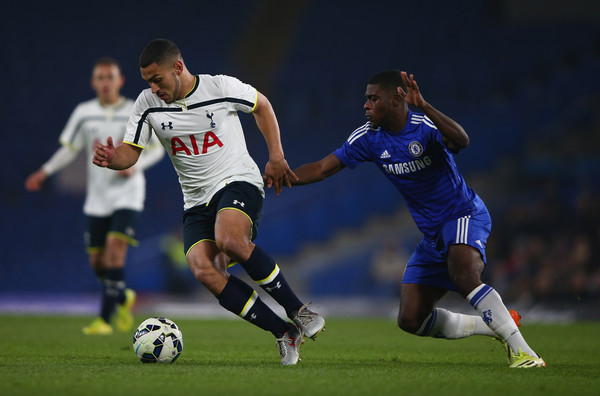
Carter-Vickers is now thought of as one of the top prospects in the Barclays Premier League, and has been highlighted as such by such credible sources as the Guardian. He has been capped by the United States at the U-23 level and is the captain of Tottenham's U-21 side at the age of just 17. In spite of his disappointing penalty miss in the Americans’ shootout loss to Serbia in the Quarterfinals, Carter-Vickers was the best player on the pitch all night.
It’s hard to believe that he’s just 17-years-old; he reads the game like a man 10 years his senior, and is already built like the steeliest of center backs. Were you to pass by him on the street, it would be easy to mistake him for a college football linebacker.
It’s often difficult for young players to break into the first team at a top side because they haven’t developed physically yet. Carter-Vickers already looks like a man. While his reading of the game hasn’t evolved to the point yet where he could man-mark Diego Costa, he’s physically ready to.
Throughout the match with Serbia, he was all over the place breaking up attacks, sweeping the ball out of danger, clearing corners with his superb aerial ability and proving a constant danger on set pieces. He’s probably still two or three years away from getting a look in with the Spurs first team, but his developmental prospects are thrilling. Expect him to spend this next season playing full time again with the U-21 squad and will compete for Spurs’ Young Player of the Year award. A further year down the line, he’ll probably play in a couple of Capital One Cup matches and then go out on loan with a Championship side. To quote one Theodor Geisel, “Oh the places you'll go.…”
Those three made up the core of the defense, but there is one other player who we must mention when speaking about the spine of this team. That man is captain and defensive midfielder Emerson Hyndman, of Fulham. The 19-year-old began making his mark on the first team at Craven Cottage last season, and he seems to have the best footballing mind of anyone on the U-20 squad.
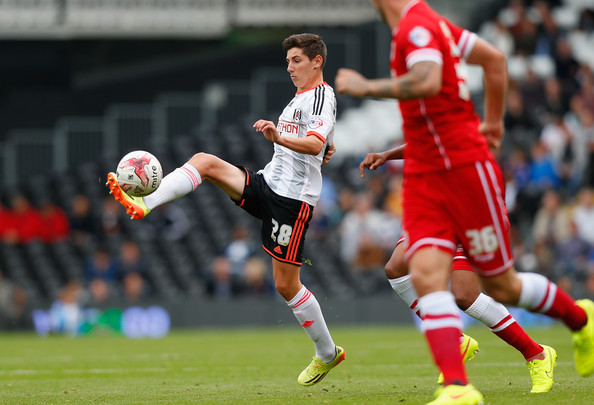
Hyndman sat back in the Americans’ 4-1-4-1 formation, providing defensive cover but not afraid to stride forward and contribute to an attack. He scored the winning goal against Myanmar in the group opener, and looked like a prototypical box-to-box midfielder while doing so. He broke up a piece of Myanmar play to start the break, and arrived on the scene at the end of it to sweep the ball into the back of the net.
His impressive play continued throughout the tournament, and he appeared to have the best passing range of anyone on the field in each match that the Americans played. Like Miazga, he is slight but does not have the height advantage that his defensive counterpart does. At just 5’7”, he needs to fill out a bit and will hope to have one last mini-growth spurt. However, with Fulham situated in the English Championship, he should get plenty of first team opportunities next term and will also expect to play a vital role in the United States’ Olympic Qualifying campaign.
Throughout the World Cup, Hyndman was joined in central midfield by 18-year-old Arsenal starlet Gedion Zelalem. Zelalem was born in Ethiopia but moved to Germany while a toddler, and grew up there. When he was nine years old, he moved to the United States and lived there from the ages of 9-15, where he began playing with a top junior side based around Washington, DC. While playing with them, he was noticed by an Arsenal scout and moved across the pond to begin playing with their academy.
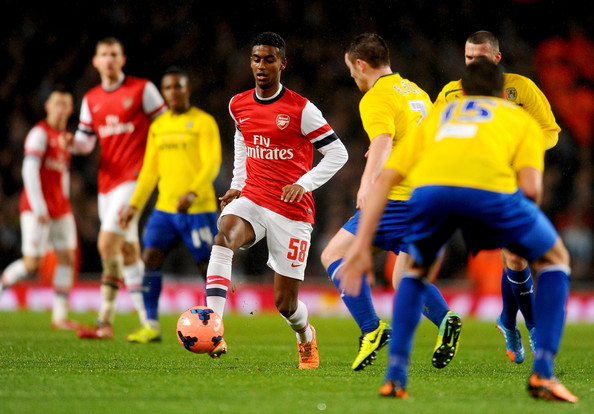
He’s now regarded as one of Arsenal’s top prospects, and has drawn comparisons with another lanky central midfielder who rose through the ranks at Arsenal: Cesc Fabregas. While there is no one who says for certain that he will be the “next Fabregas”, he has loads of potential.
Zelalem is eligible to play for Ethiopia and Germany, and played at the youth national team level with the Germans. However, he was widely rumored to be interested in playing for the United States, and senior manager Jurgen Klinsmann views him as a top prospect for the future. Over the winter, Zelalem’s father became an American citizen, allowing the midfielder to naturalize himself and he is now in possession of an American passport, meaning he can represent the United States.
Zelalem is the sort of technical, skillful player that the United States does not often boast. He runs with the ball at his feet like a natural, and has a bag of tricks many would kill for. His rabona cross against New Zealand in the United States’ 4-0 victory over the Kiwis led to innumerable gifs and thousands of retweets.
Yet, he has a propensity to drift in and out of games, and to have long periods where he is anonymous on the pitch. That is often seen as the curse of the creative player; they have the ability to change a game with one pass, one run, one moment. Yet, when they aren’t on, they’re often times a detriment to the team.
Zelalem has quite a bit of developing to do, but the high regard in which both Jurgen Klinsmann and Arsene Wenger hold him in can only bode well. There are rumors that Klinsmann may bring him in with the senior national team before too long, and Wenger has given him cameo appearances in both the UEFA Champions League and the FA Cup. Hopefully, he’ll get the opportunity to play a bit in the Barclays Premier League next season.
We’ve yet to speak in any detail about wide players, and there are a few who have some promise. Paul Arriola, Tommy Thompson and Bradford Jamieson IV all have a lot of promise. Arriola plies his trade professionally with Club Tijuana in Mexico, Thompson resides in San Jose where he plays with the Earthquakes and Jamieson lives just down the road where he plays with the LA Galaxy. Arriola was one of the leaders of this U-20 team, and his tireless work down the right wing was a constant joy to watch. He defended doggedly, tracked back, and had the speed to make dangerous ventures forward.

Thompson played less regularly than Arriola, and didn’t start until after Jamieson got hurt against Colombia. However, he plays with the arrogance and lack of fear that characterizes most talented youngsters.
He too has had a “giffable moment”. It came last summer while playing with the Earthquakes, when a moment of “ball on a string” close control led to tens of thousands of YouTube views and a notable increase in his rating on FIFA 15. Yet, those things a good footballer do not make. There needs to be substance behind all of that, and it appears that Thompson does have that.
Of those three, it seems that Jamieson may be the most talented. He thrilled last season with “Los Dos”, the LA Galaxy’s academy team in USL PRO. In fact, he was so impressive that he began playing with the first team in MLS, and it’s clear that he has the technical ability to play regularly in America’s top league. It was clear to the Galaxy brass as well, and he has been a member of the first team squad this season.
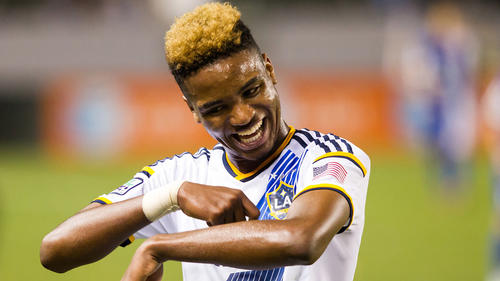
There’s one creative player we’ve yet to mention: Joel Sonora. The midfielder has come through the ranks at Boca Juniors, one of the best clubs in Argentinian history. He’s another player who runs naturally with the ball at his feet, and can pick out a pass. However, he and Zelalem have very different playing styles; it’s clear where they have grown up playing. Although Zelalem is slight, he tackles like a European. Sonora is more likely to score a wonderful goal, but is less likely to track back and make a crunching tackle outside the box. He didn’t play much at the U-20 World Cup, but will be hopeful of playing a role in the Olympic Qualifying campaign.
Finally, it’s time to look up top at one of the two heroes of the Colombia match: Rubio Rubin. It was his half-volleyed goal which sent the Americans into the Quarterfinals, and he is so highly thought of by Jurgen Klinsmann that he’s been capped three times at the senior level. Rubin went through the Portland Timbers academy set up, and then signed his first professional contract with FC Utrecht of the Dutch Eredivisie.
Last season, Rubin established himself in the first team at Utrecht, and the 19-year-old scored three goals while appearing on 28 occasions. It was a decent return for a young player in his first season as a professional, and he has every chance of following up on his strong showing in New Zealand with a good season next year.
The United States are just weeks away from having a chance to solidify their standing as the top team in CONCACAF while booking their place at the 2017 Confederations Cup. All American soccer fans should revel in next month’s Gold Cup, but also should be unafraid of looking to the future. In fact, they should be thrilled to look to the future, because this group has quite a bit of promise. Oh, the places they can go…

